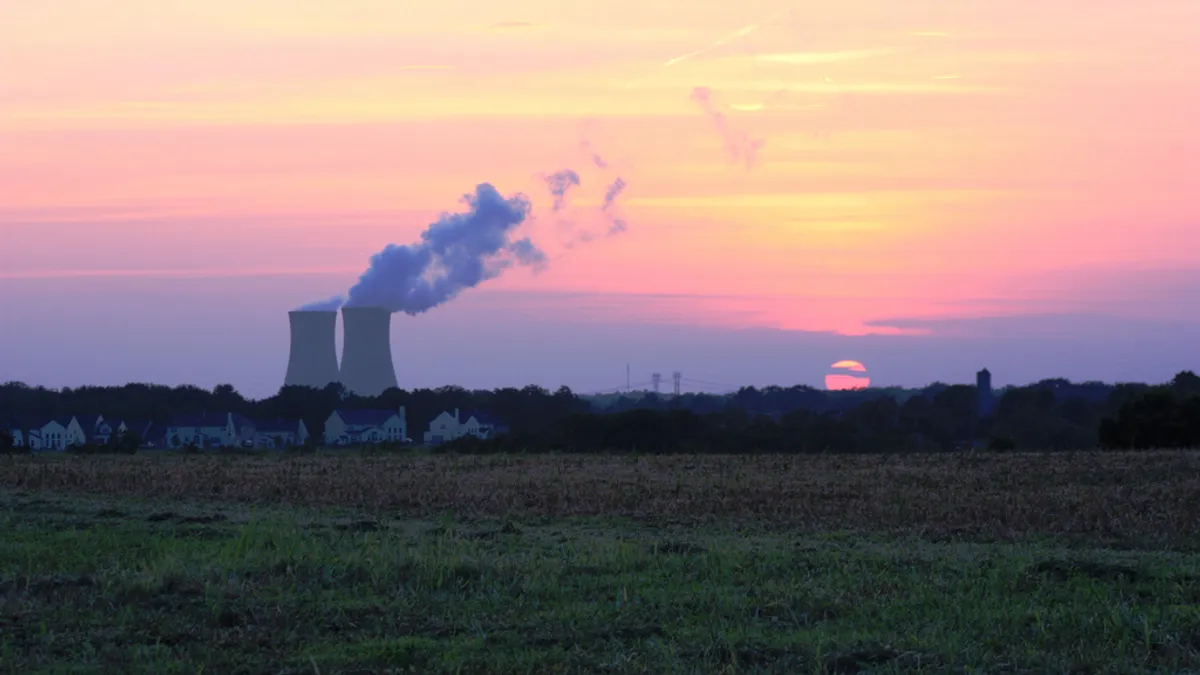The following is a contributed article from three former Assistant Secretaries of Nuclear Energy at DOE: Warren F. Miller, nuclear engineer, Peter B. Lyons, a former NRC Commissioner, and John F. Kotek., Vice President of the Nuclear Energy Institute.
Development of next-generation nuclear energy technology enjoys broad bipartisan support. This support has grown ever stronger as concern over human-induced climate change has escalated.
That's because policymakers and leading environmental organizations have come to recognize what the operators of our electric grid have long known — the most affordable and technically feasible approaches to decarbonizing our electric grid will depend on both preserving today's nuclear power plants and expanding the use of carbon-free nuclear generation in the near future.
Those who follow the energy industry are undoubtedly aware of the increased private and public sector investment in developing new nuclear energy technology. During our time leading the U.S. Department of Energy's Office of Nuclear Energy, we worked with our administration colleagues and with Congress to launch a series of private-public cooperative programs to accelerate commercial development of new nuclear energy technologies.
"[A]s with any organization, the NRC must evolve to keep up with changes in technology."

These programs are having the desired effect. From next-generation nuclear fuels to small modular reactors to micro-reactors, nuclear innovators are preparing a wide range of new technologies for the marketplace. Next-generation nuclear fuel designs are already being demonstrated in the 97 commercial nuclear power reactors that provide nearly 20% of U.S. electricity.
NuScale, one of several companies developing a new class of smaller reactors to be factory-built and constructed in modules, is on track to receive design approval from the U.S. Nuclear Regulatory Commission (NRC) next year. And several other innovative reactor developers are engaged with the NRC in earlier stages of design review.
NRC safety review is a crucial step in delivering new technologies, both for use in the U.S. and for export into the global energy marketplace. The NRC is widely viewed as the world's leading nuclear safety regulator, and NRC approval of a new technology carries great weight with safety regulators around the world.
But despite this world-leading status, and as with any organization, the NRC must evolve to keep up with changes in technology.
"One of the primary reasons we promoted development of a next generation of nuclear energy technologies is to take advantage of what we've learned over more than 60 years of nuclear power operations."

One of the challenges facing today's NRC is to adapt its regulations and oversight practices to a generation of technologies that didn't exist when today's regulatory framework was developed. NRC leadership has recognized this need for change, and has set the agency on a path to transform the NRC culture to ensure that regulatory decisions reflect an awareness of the risks involved, that licensing reviews are conducted in a reasonable timeframe, and that regulatory actions are focused only on those areas that can have a meaningful impact on fulfilling the NRC mission to protect worker and public safety.
This change in NRC culture is essential. One of the primary reasons we promoted development of a next generation of nuclear energy technologies is to take advantage of what we've learned over more than 60 years of nuclear power operations, to further improve on the outstanding safety record of U.S. nuclear power.
For example, we've learned how to design simpler, more cost-effective nuclear energy systems that rely on natural phenomena, such as gravity and natural convection, instead of mechanical systems like pumps and backup generators. In fact, the NRC staff has concluded the NuScale reactor doesn't require pumps or generators to meet NRC performance requirements. The staff has also concluded that the NuScale design is so robust that any impacts from an accident would be confined within the plant site, thus eliminating the need for emergency planning by local communities.
These are clear and positive examples of an evolving NRC approach. But to fully realize the advantages of new reactor technologies, this transformation must be accelerated if we are to reach our environmental goals.
Thus, the willingness of the NRC to issue these findings represents an important milestone along the path toward the regulatory transformation and culture change that must occur at the NRC. We applaud the NRC leadership and staff for their continued and effective efforts to realize these necessary changes.
The NRC should continue and seek to further improve upon this agency-wide transformation. Tailoring regulatory requirements and practices to reward nuclear technology innovation will enable a next-generation of affordable, reliable, carbon-free nuclear energy to be ready when we need it, to work alongside wind, solar and other forms of carbon-free energy to enable the rapid transition to a completely decarbonized electrical grid.













